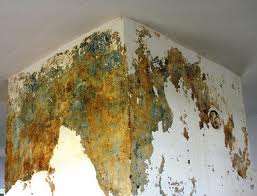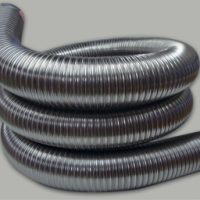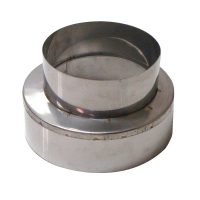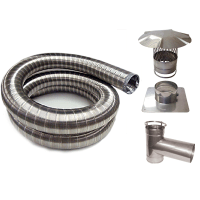Chimney is Leaking
My chimney is leaking upstairs. Is the paint falling off in the upstairs bedroom around the chimney? Did you call a roofer thinking there was a leak in the flashing? Did you recently get a new furnace, especially a high efficiency furnace?
Many people think the problem is rain water entering from the outside through the flashing. Actually the condensation problem may originate in the basement. Today with the high efficiency furnaces it keeps more of the heat inside the house rather than sending the heat up the chimney as waster money. Which is very good for your wallet. But along with that comes other problems.
Where is the water coming from?
New gas furnaces are extremely efficient. One of the by-products of burning gas is water. In older furnaces or ones that are less efficient, a lot of the heat went up the chimney and the furnace kept that moisture as a hot steam and the steam exited the chimney into the atmosphere. However today, the same amount of moisture goes into the chimney but with much cooler temperatures. So especially in the winter with colder temperatures outside, the moisture and exhaust enter the chimney and as it rises and it cools down, the moisture then produces condensation that then soaks into the masonry. This creates multiple problems. The problems start from the top and work their way down. This is because the flue gases cool down the farther they travel up the chimney. When they cool down this is when the moisture condensates and the water soaks into the masonry making you think that your chimney is leaking.
What symptoms will I notice?
The first problem you will notice is what appears to be a water leak upstairs on the walls. You may call a roofer or a handy man and they will do everything they know how to and nothing will change, the problem will still exist.
Another problem is this moisture that is now condensation on the inside of your chimney isn’t just water. It has acids in it from the burning of the gas. This moisture is extremely corrosive to masonry. This problem usually goes unnoticed until it is too late. The chimney starts deteriorating from the inside out and from the top down. The average homeowner does not normally check the inside of his chimney. So once you start to visibly see damage to the masonry, you know the inside of the chimney is in much worse condition. The flues, what is designed to keep the gases inside the chimney, are deteriorated and are at a high risk of blocking the chimney.
One other problem that is more rare but still caused by the furnace is what appears to be a water leak in the basement. There may be so much moisture as condensation that it is running down the inside, that chimney is leaking out at the base, or clean out area. The water may be coming out from the clean out door or just leaking through the walls. If you have water like this and the only spot in the basement that it is leaking, there is a high possibility that is is coming from the chimney.
If your chimney is leaking or has any of these symptoms you are at risk of a block in the chimney and carbon monoxide poisoning. Or if you have had a new furnace installed recently expect these problems very soon. To prevent all these problems and a costly chimney rebuild, install a stainless steel chimney liner that is designed to keep all the flue gases and all the moisture inside the stainless steel liner. This will prevent the moisture from leaking into the house and keep the acids inside the stainless steel so the exhaust never even comes into contact with the masonry.






